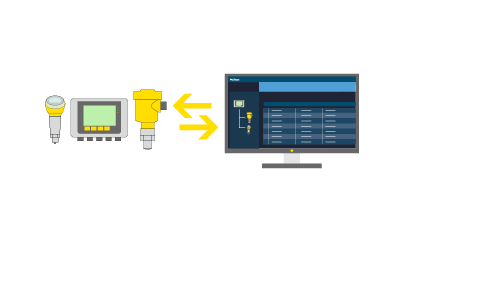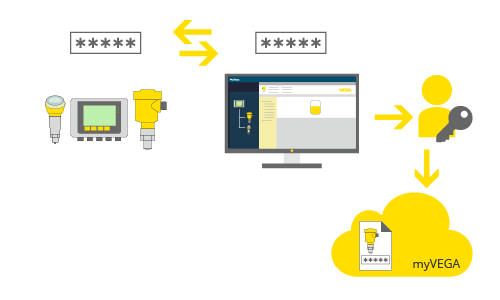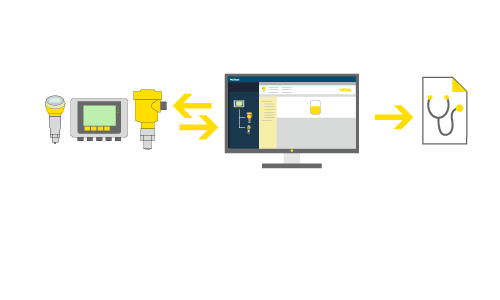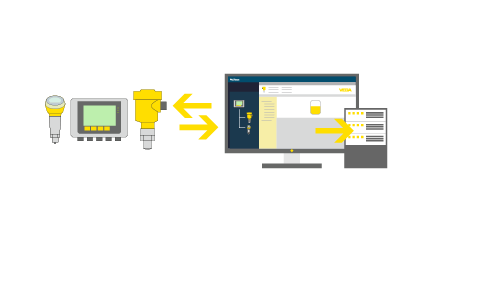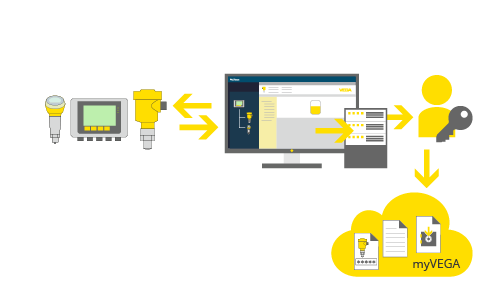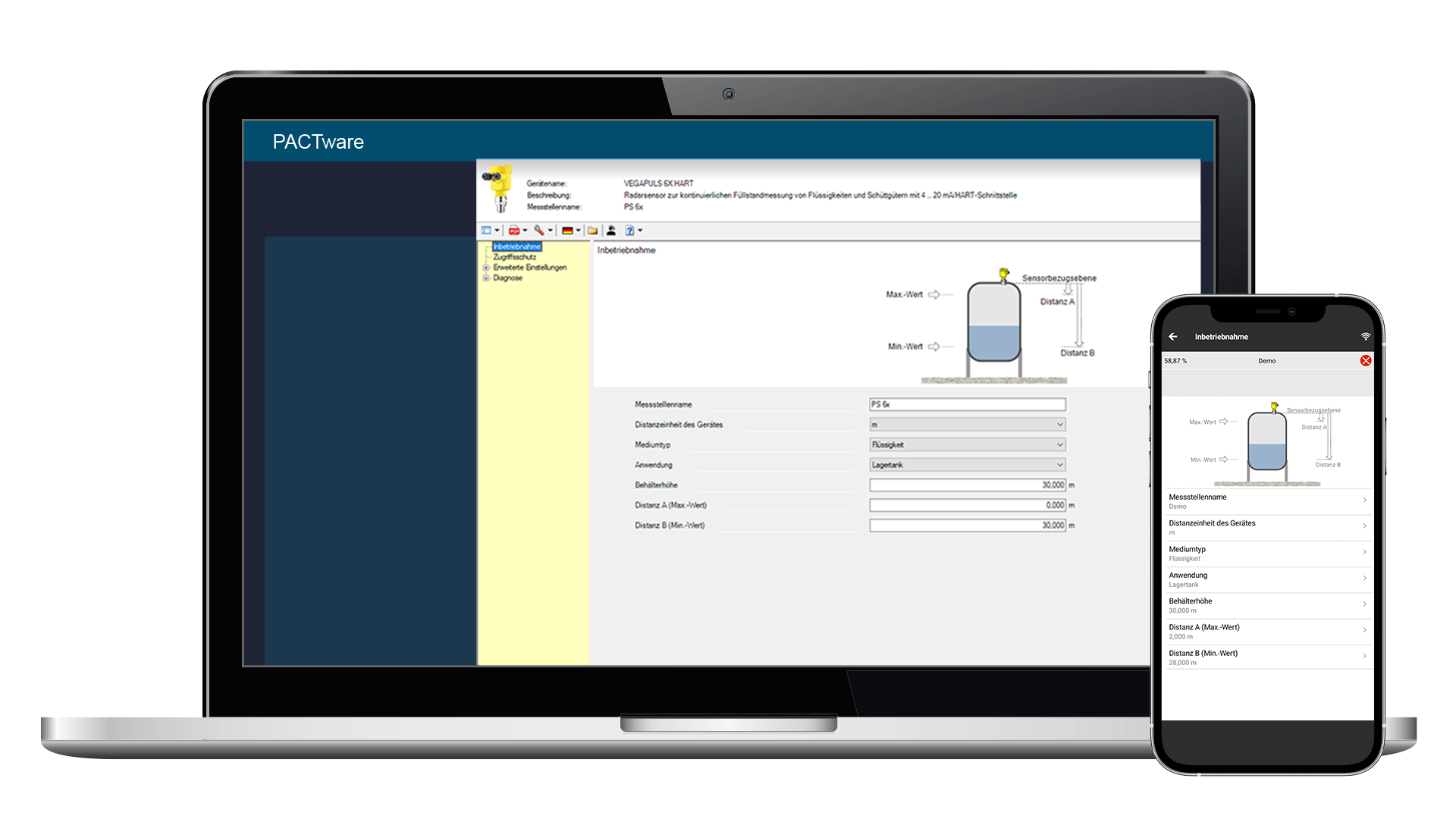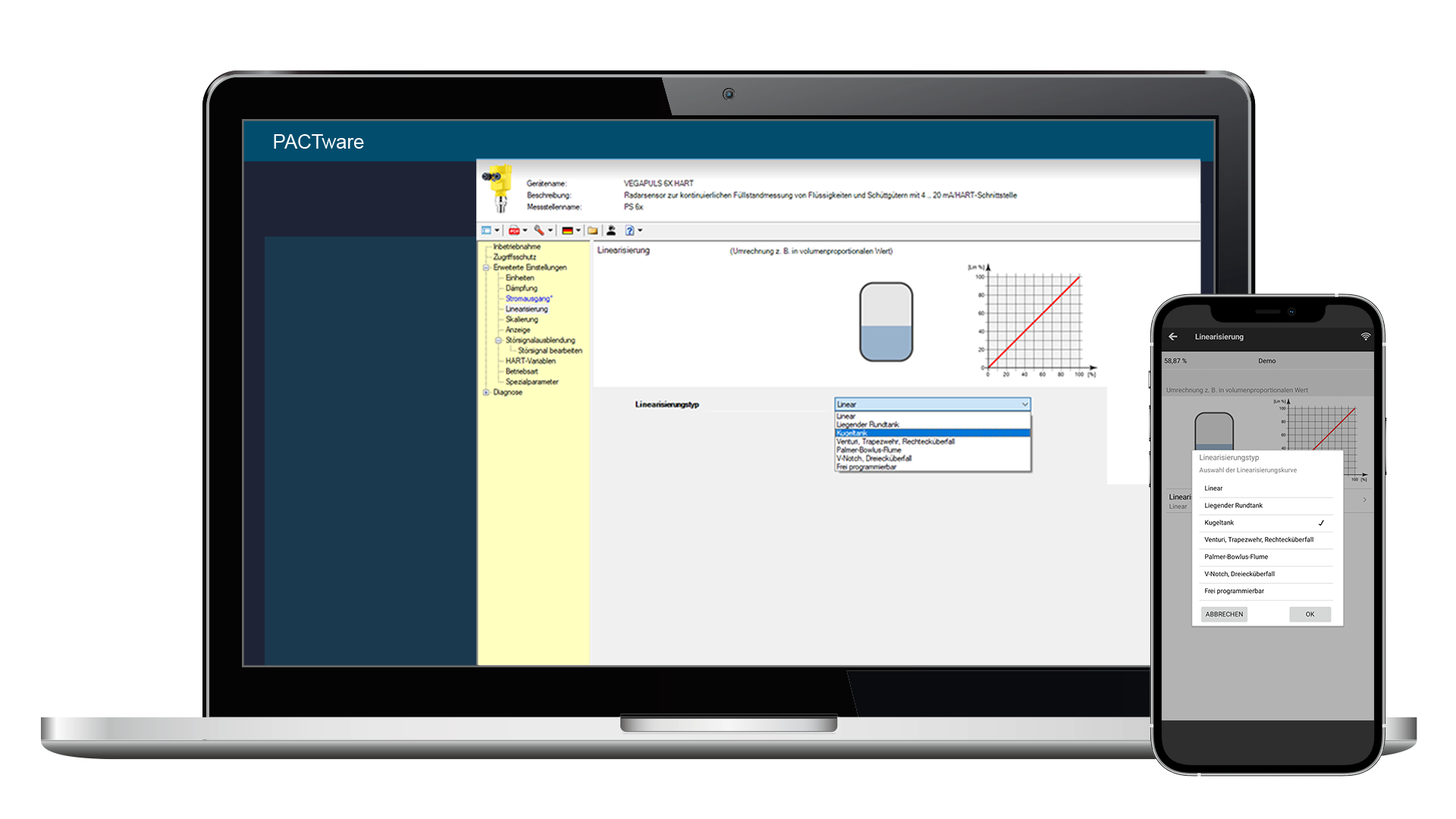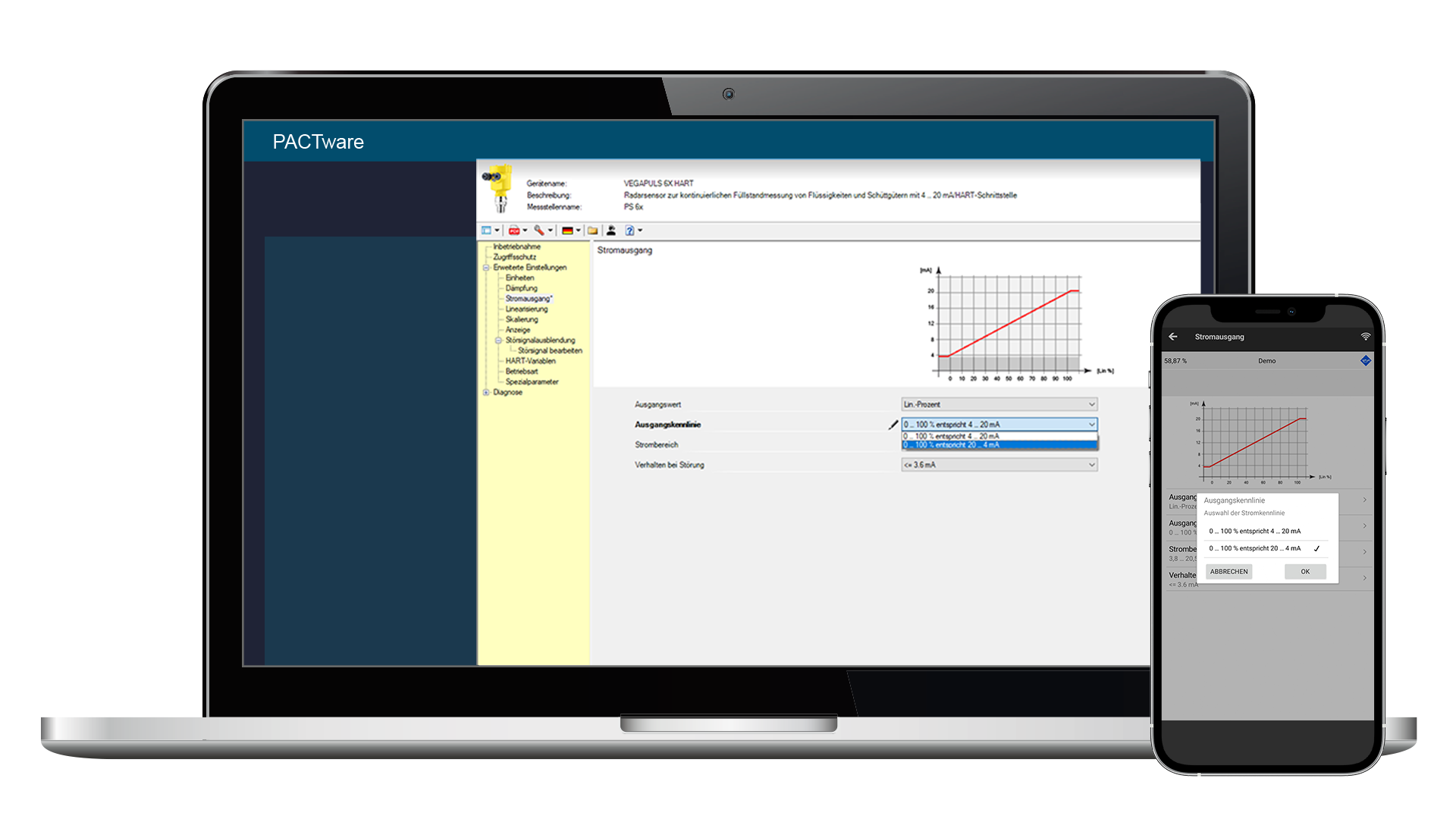VEGA DTM Collection
The VEGA DTM Collection is the adjustment software for all communication-capable VEGA instruments. The software package consists of PACTware, the VEGA DTMs, the VEGA DataViewer as well as various standard communication DTMs.
A Bluetooth driver also enables wireless communication with Bluetooth-capable VEGA instruments like the display and adjustment module PLICSCOM. A VEGA Bluetooth USB adapter is available for PCs without an integrated Bluetooth module.
The full version DTM collection is now free for everyone
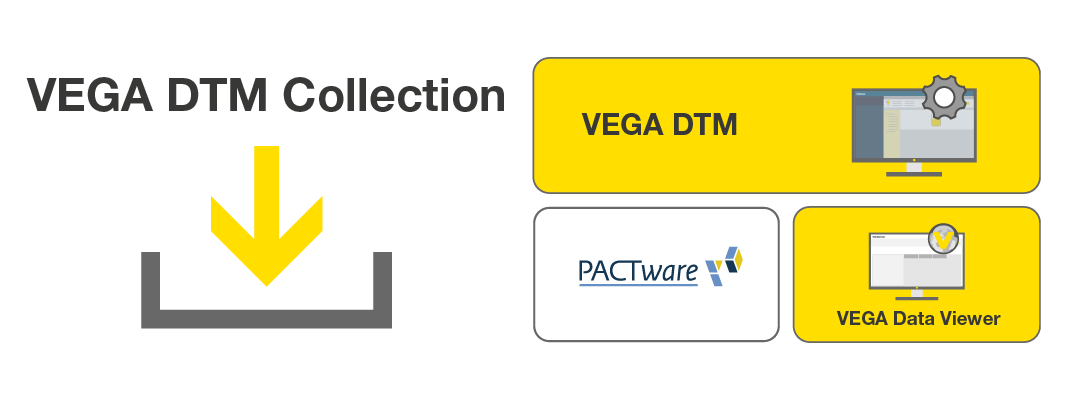
Components of the VEGA DTM Collection
VEGA-DTM
The DTM (Device Type Manager) is the actual adjustment module of the sensors and field components. It contains all device-specific data and functions of a sensor type and provides all graphic elements and dialogues needed for adjustment. A DTM is not a stand-alone, executable software – it can only be used with a supporting programme like PACTware.
PACTware
PACTware is a manufacturer and fieldbus independent software for operation and adjustment of all types of field instruments. The DTMs of the corresponding field device manufacturers are integrated into this open and freely available supporting programme via interface specification FDT 1.21/2.0/3.0.
FDT
FDT (Field Device Tool) is a standardised software interface that describes the interaction between the DTM and the frame application. FDT regulates the exchange of data.
VEGA DataViewer
VEGA Data Viewer is installed locally on the device and can also be linked to myVEGA.
The data can be conveniently stored there and accessed at any time – from any adjustment device.
The VEGA DTMs
Functions
- Project assistant
- Security
- Diagnosis
- Local storage
- Backup & restore
Setup and commissioning
- Application
- Min./Max. adjustment
- Linearisation
- Current output
Backup
Backup files can be saved locally on the end device and treated like any other file – they can be copied, archived and sent, for example.
Service
- Service recordings
- Contact to customer service
Saving instrument data
VEGA offers the option of managing the data locally on an end device or saving it in myVEGA via a personal account. Saving in myVEGA provides the advantage that the data is available to the user on all end devices and at any time via the VEGA website.
Backups
The “Create backup” function makes it possible to export the current DTM instance data to a file (the backup).
This file is used for data backup and can later be imported into a DTM of the same type to restore the instrument data.
Documentation
Instrument documentation or the results of an instrument test can be conveniently created as a PDF file – flexibly via any operating device. The data is managed in the area “Documentation.”
Instrument memory
The measured value memory in the instrument saves the measured values over a certain period of time. It can also be read out from the instrument at a later time.
The event memory saves all events that have occurred in the sensor, such as error messages or parameter changes that have been made. These events can be read out from the sensor at any time with date and time stamp, providing a good overview of the instrument status.
Service recording
Using the “Service recording” function, the DTM generates a complete set of diagnostic and analysis files – basically a record of measured values and echo curves.
The files are suitable for individual archiving and use in an external viewer. They are also helpful when support from a VEGA service technician is needed.
(1) A backup of all instrument data can be created via PACTware/DTM as well as the VEGA Tools app.
(2) The backup files and documents are first saved locally on the device.
(3) Anyone who is logged into myVEGA on the respective end device can easily send the backup data to myVEGA.

Service
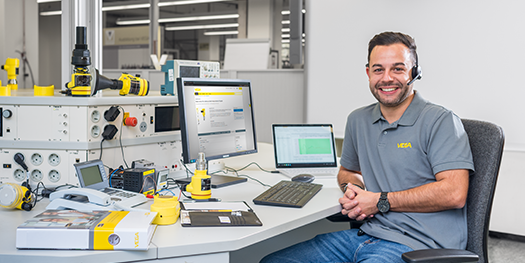
Free service

Fast contact
Expert consultation is just a click away – whether by phone, direct message or e-mail.
- Service telephone
- 24 h hotline available
- Direct contact to customer service
- Your own contact person

